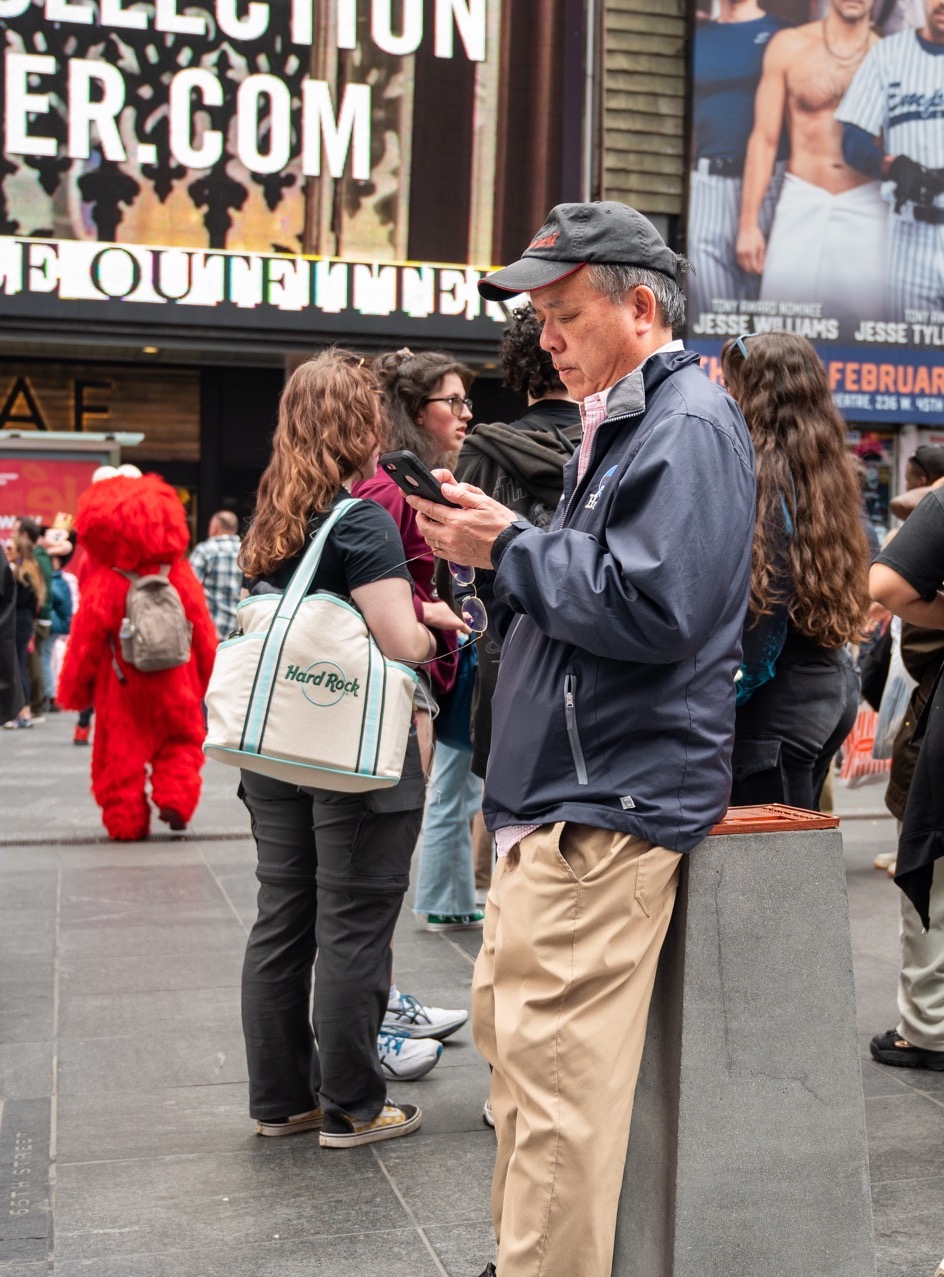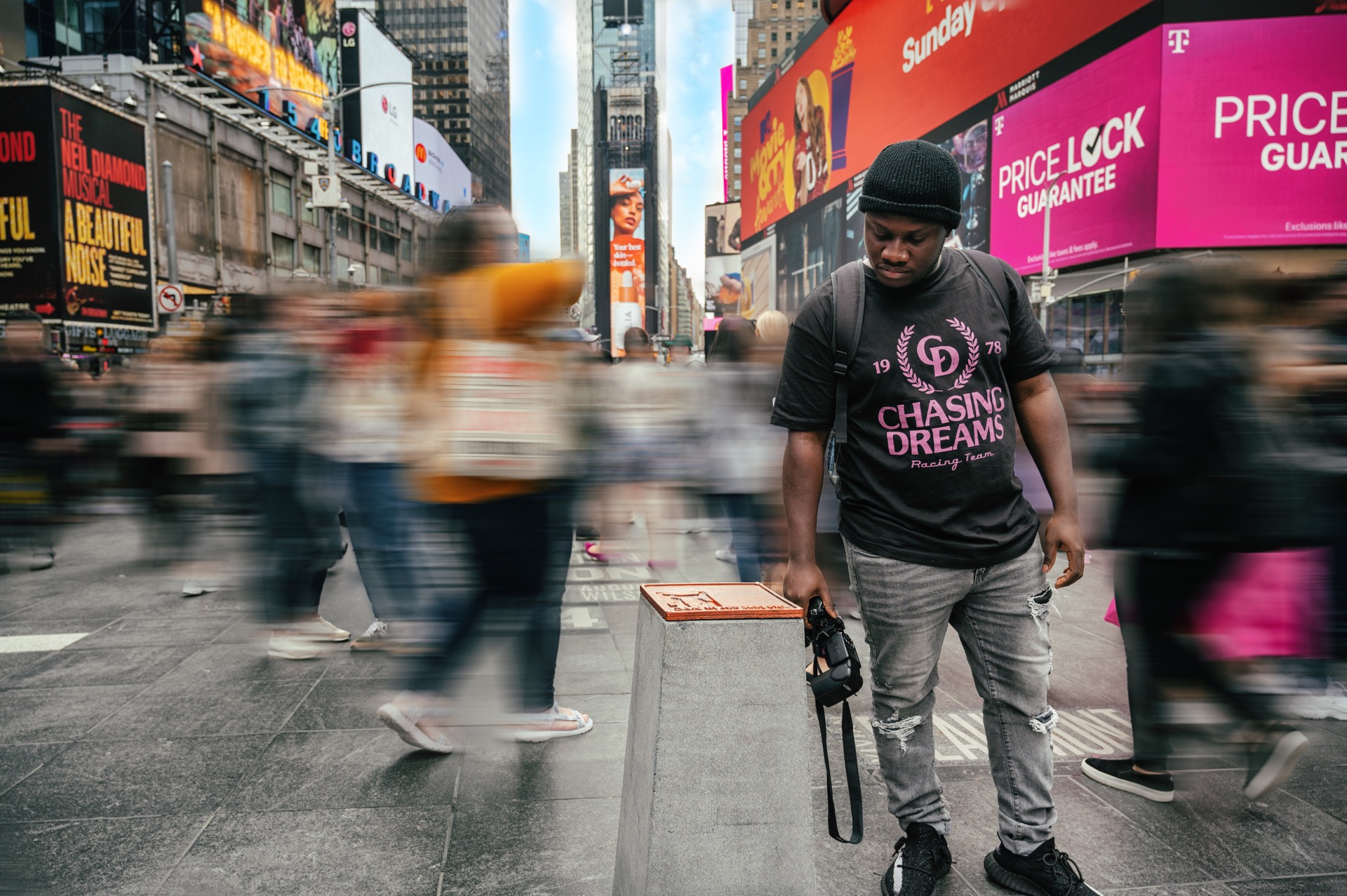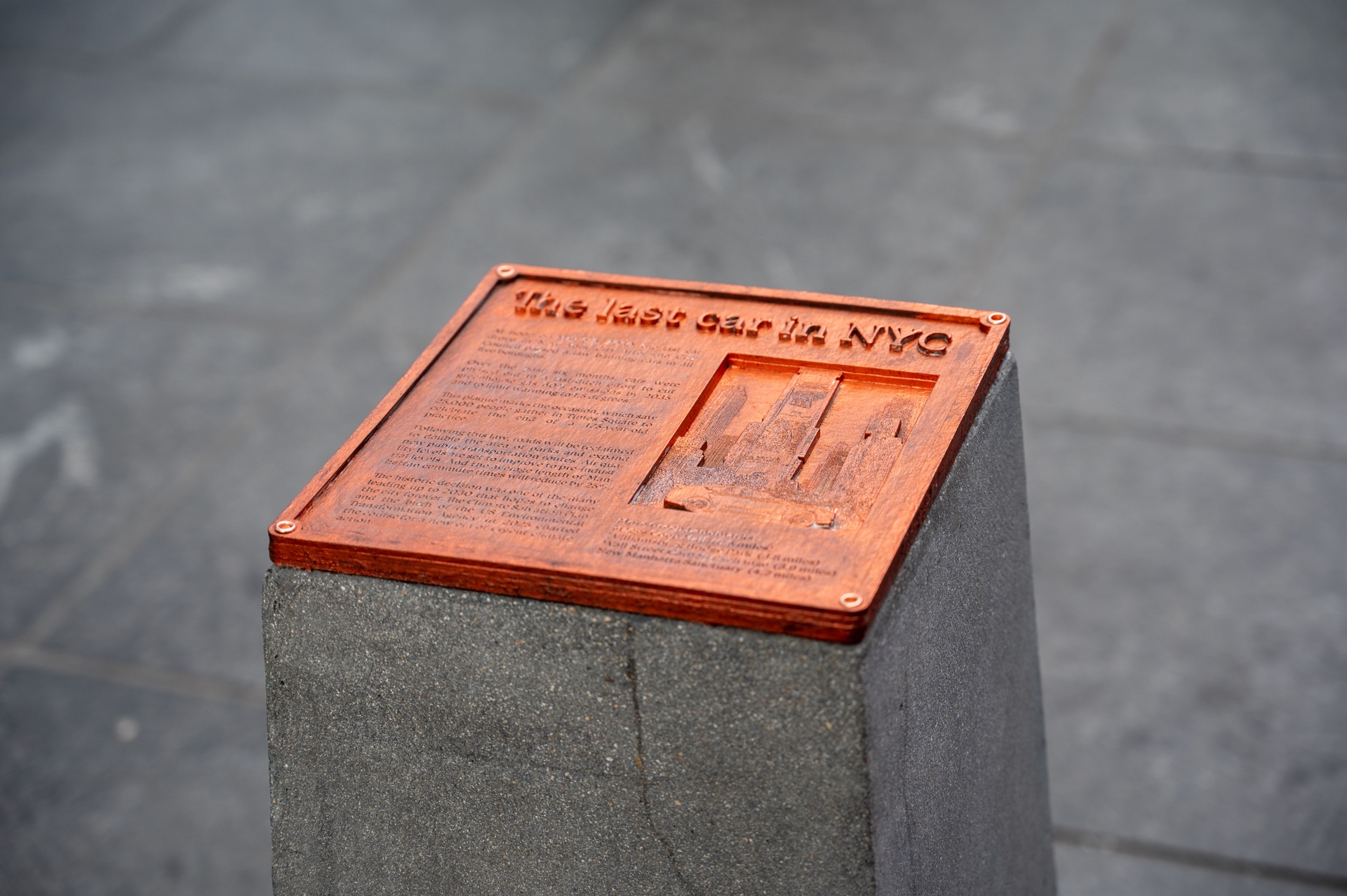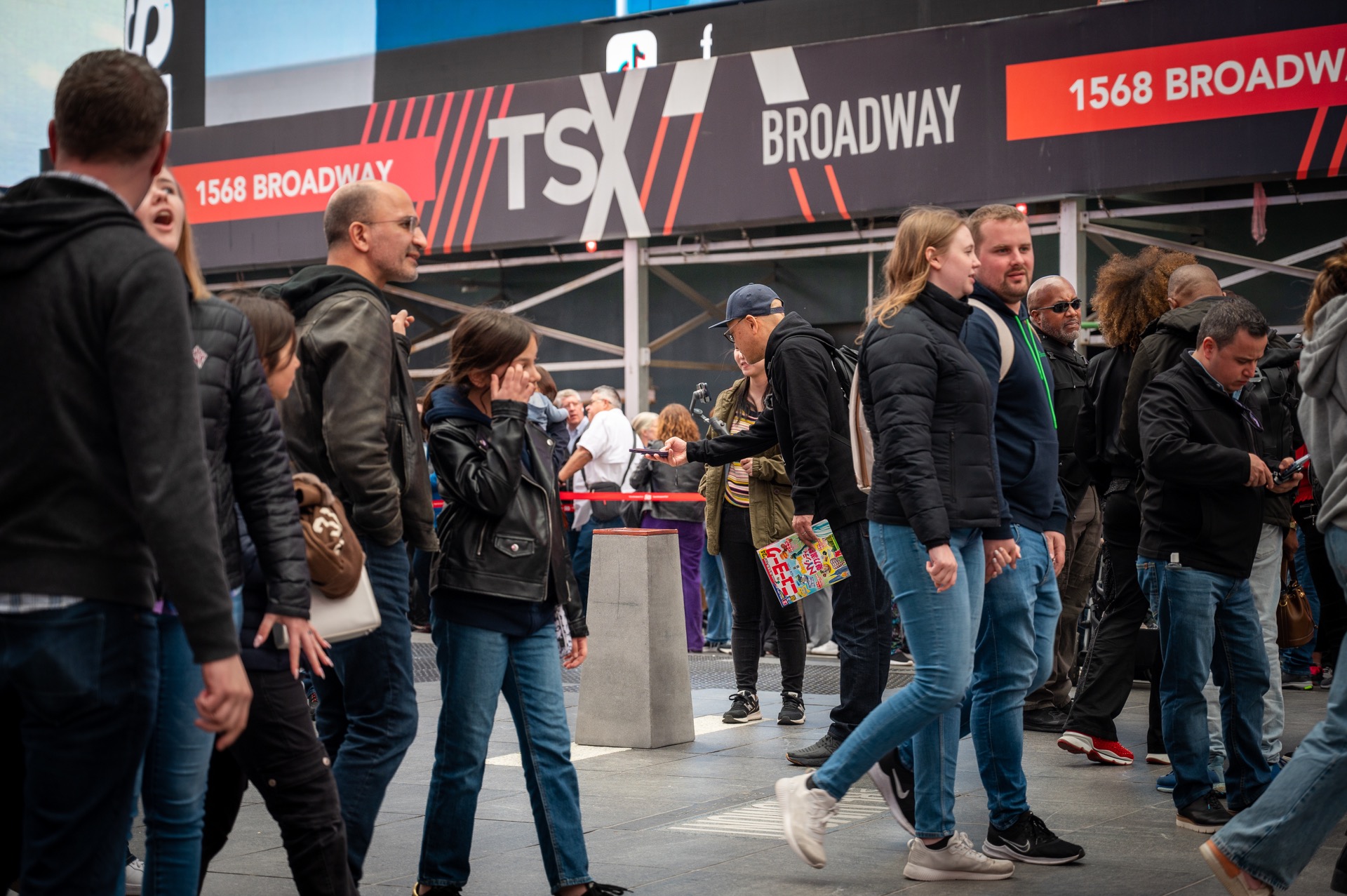The last car in NYC
The IPCC 2023 report has once again shown that strict climate action is needed to reach
the goals of the Paris Climate Agreement. To explore possible futures where humankind has
taken maximum climate action, we staged the tenth anniversary of the last car in New York
with a plaque in Times Square. To situate ourselves in this world in the first place, we
wrote the following scenario to create the world around it.
In 2040, New York City transforms with a skyline adorned by solar panels and wind turbines,
achieving net carbon emissions targets. The city embraces electric transportation, with electric
buses, trains, and autonomous vehicles dominating the streets. Bike lanes comprise half of the
road space, while heavy taxes on personal cars encourage a ridesharing culture. Strict regulations
on carbon emissions for buildings, along with incentives and subsidies, drive the adoption of
clean technologies such as rooftop solar panels. Adaptive reuse projects and multi-use rentals
replace new construction, reducing carbon footprints. Increased investment in carbon capture and
storage creates green spaces and thriving waterways. Each borough dedicates 5% of its area to green
spaces, while innovative projects extend Manhattan and promote sustainability across different districts.
The city prioritizes social equality by providing renewable energy, green jobs, and green spaces to
limate refugees. The shift from GDP to net carbon emissions as a benchmark influences policy, backed
by media organizations and citizens' green scores. Tax returns are replaced by reporting net carbon
emissions, leading to significant changes in taxation rates. New York City's success inspires global
collaboration and sets an example for a greener and more sustainable future.

To make this experience seem as real as possible, we built a plaque on a concrete base and placed it
around times square. Dressed as tourists, we captured interesting interactions from a father trying to
explain the plaque to his children to people placing their water bottles on it.
In the second stage, we changed our role and interacted with bystanders to start conversations
about transportation in NYC. Besides a lot of curios and also confused faces, we were able to gain
a deeper understanding of personal relationships towards transportation regarding climate action.



